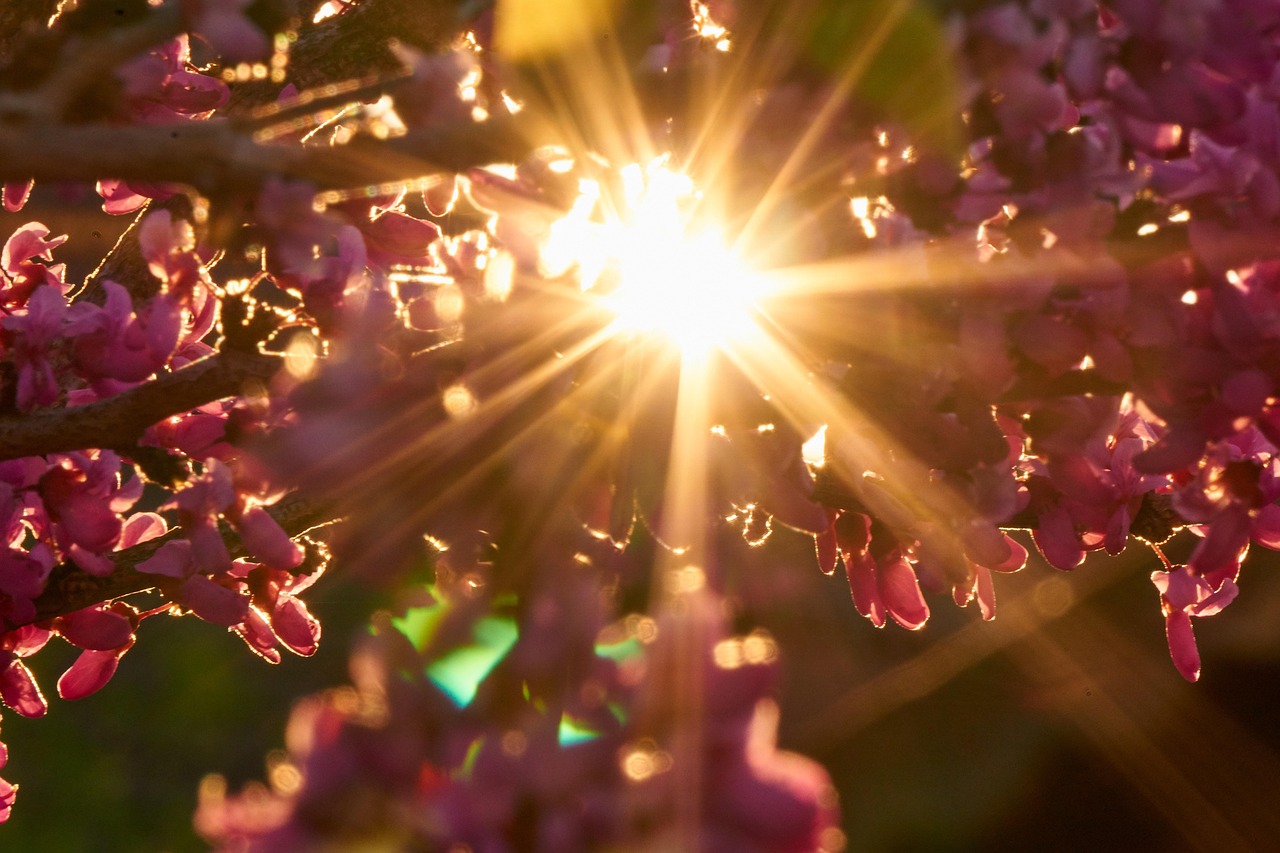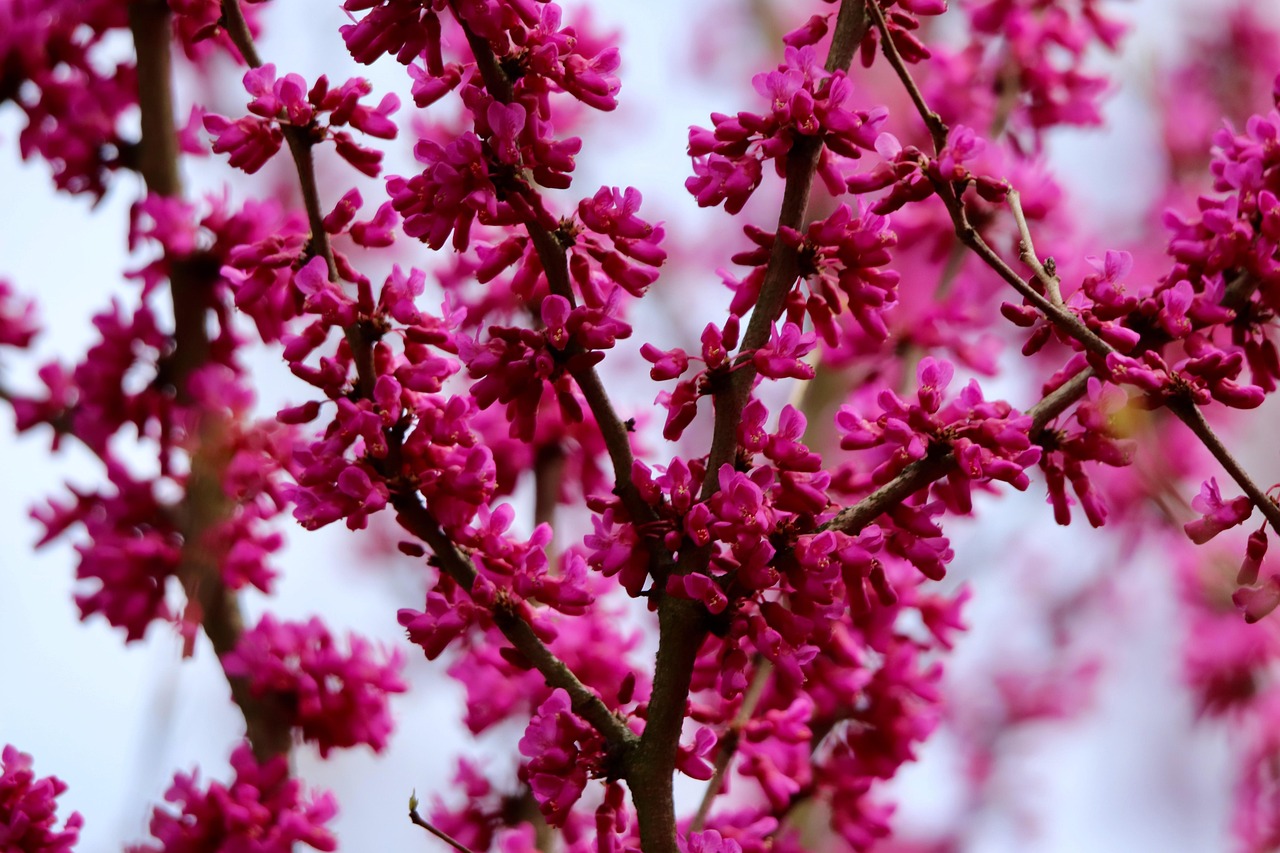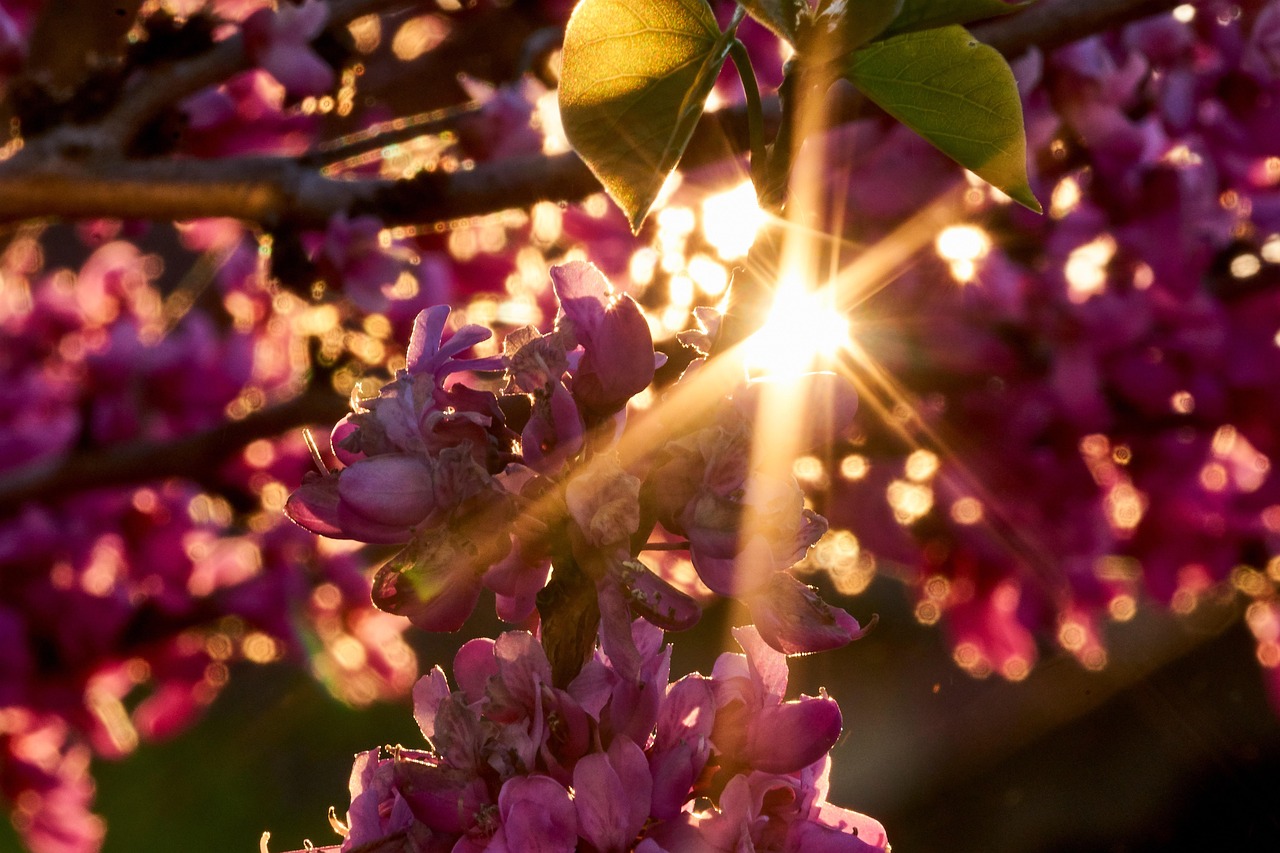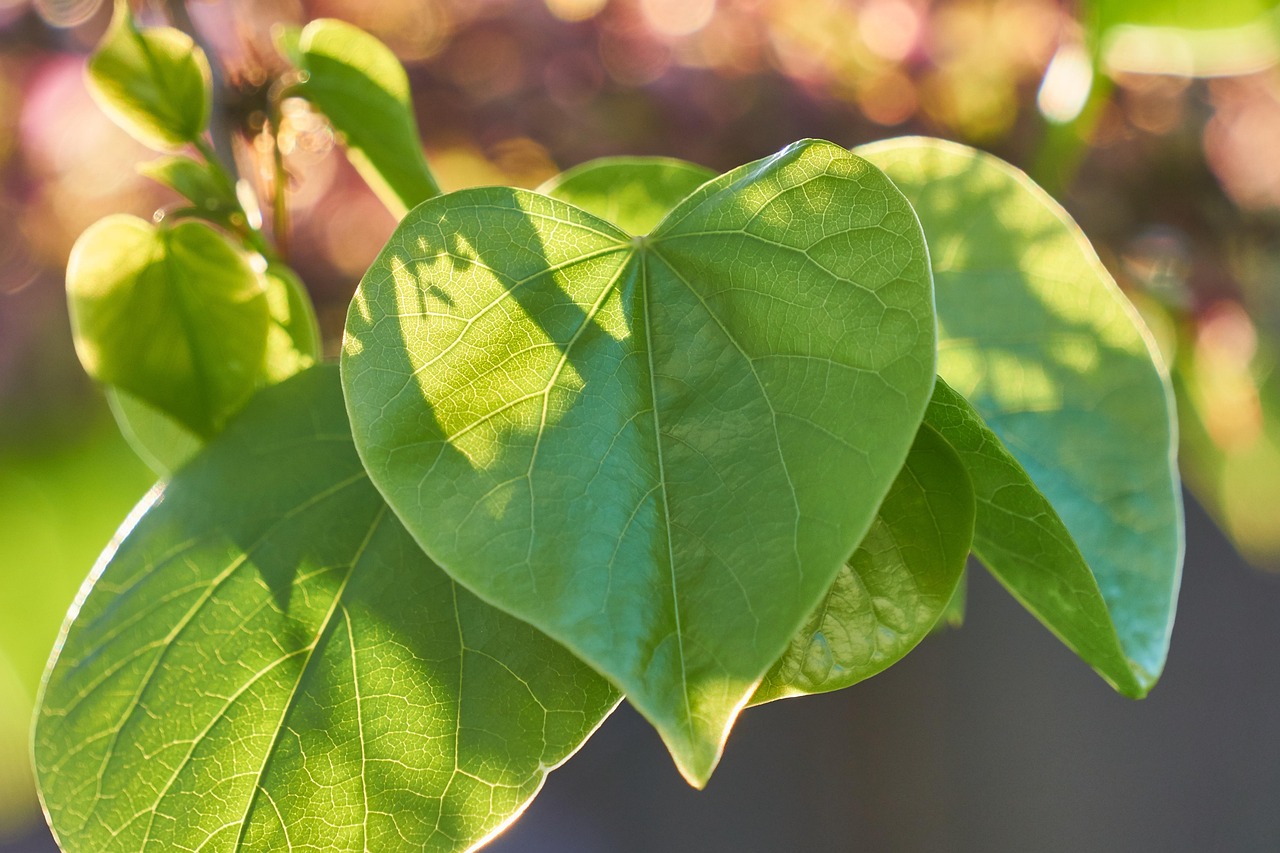The Judas tree, or Cercis siliquastrum, is known for its moderate growth rate, typically ranging from 12 to 24 inches per year. This growth makes it an excellent choice for spring blooming landscapes, as it can quickly establish itself and provide stunning pink flowers.
Understanding the Judas Tree
The Judas tree is a deciduous tree native to parts of Europe and Asia. It is popularly cultivated in gardens and landscapes for its striking spring blossoms. The tree features heart-shaped leaves and produces vibrant pink flowers that bloom directly on its branches before the leaves emerge, creating a spectacular display. This unique blooming pattern attracts pollinators and enhances the overall aesthetic of any landscape.

As a member of the legume family, the Judas tree is not only beautiful but also environmentally beneficial. Its ability to fix nitrogen in the soil improves soil fertility. This characteristic makes it a suitable choice for various landscaping projects, especially where soil improvement is desired.
Growth Rate and Conditions
The growth rate of the Judas tree can vary based on several factors, including soil quality, sunlight exposure, and water availability. Generally, the tree grows best in well-drained soils and full sun to partial shade. Here are some key factors affecting its growth:
- Soil Quality: Well-drained, loamy soils promote faster growth.
- Sunlight: Full sun encourages abundant blooming and healthy growth.
- Watering: Regular watering during dry spells supports optimal growth.
- Fertilization: Occasional fertilization can enhance growth, particularly in poor soils.
Ideal Growing Conditions
To ensure a thriving Judas tree, it’s essential to consider its ideal growing conditions. These conditions will not only influence the growth rate but also the overall health of the tree. Here are some recommendations:

| Condition | Recommendation |
|---|---|
| Soil Type | Loamy, well-drained soil |
| Sunlight | Full sun (at least 6 hours per day) |
| Watering | Moderate; avoid waterlogging |
| Fertilization | Annual application of balanced fertilizer |
The Judas tree’s growth can be influenced by its environment. Urban areas with heat islands may promote faster growth, while shaded locations may slow it down. When planted in optimal conditions, the tree can reach heights of 20 to 30 feet, making it a striking focal point in any garden or landscape design.
Blooming Characteristics
The Judas tree is celebrated for its stunning spring blooms. The flowers appear in clusters and have a unique rosy pink hue. These blossoms usually emerge around late March to early April, depending on the climate and location. The flowering lasts for several weeks, providing a beautiful spectacle during the spring season.
This early blooming period also serves as an important food source for various pollinators, including bees and butterflies. The vibrant colors and sweet scent attract these beneficial insects, supporting local ecosystems and enhancing biodiversity in landscapes where the Judas tree is planted.

Seasonal Care Tips
To maximize the growth rate and blooming potential of your Judas tree, consider these seasonal care tips:
- Spring: Inspect for pests or diseases after blooming. Prune any dead or damaged branches to promote healthy growth.
- Summer: Water regularly during dry spells. Apply mulch around the base to retain moisture.
- Fall: Rake fallen leaves to prevent fungal issues. Fertilize with a balanced product to support next year’s growth.
- Winter: Protect young trees from extreme cold with mulch or burlap wrapping.
With proper care and suitable growing conditions, the Judas tree will thrive, providing breathtaking blooms each spring while enhancing the beauty of your landscape. Its moderate growth rate makes it an accessible option for gardeners looking to add color and interest to their outdoor spaces.
Propagation Methods for the Judas Tree
Propagating the Judas tree can be a rewarding experience for gardeners. There are several effective methods for propagating this tree, each with its own advantages. Understanding these methods will help you expand your collection of Judas trees or share them with friends and family.

Seed Propagation
One of the most common ways to propagate the Judas tree is through seeds. This method takes patience, as seeds need specific conditions to germinate successfully. Here are the steps for seed propagation:
- Collect Seeds: Harvest seeds from mature pods in late summer to early fall.
- Stratification: Place the seeds in a moist medium and refrigerate them for 30 to 60 days to simulate winter conditions.
- Sow Seeds: Plant the seeds in well-drained soil after stratification, ideally in early spring.
- Water and Care: Keep the soil moist but not soggy. Germination typically occurs within 2 to 4 weeks.
Seed propagation allows for a larger number of trees to be grown simultaneously, making it a favored method for those looking to create a small grove of Judas trees.
Cutting Propagation
Another effective method is propagation through cuttings. This technique can produce quicker results compared to seed propagation. Here’s how to propagate Judas trees via cuttings:
- Select Cuttings: Choose healthy, semi-hardwood cuttings from the current year’s growth. Aim for lengths of 6 to 8 inches.
- Prepare Cuttings: Remove leaves from the lower half of each cutting. Optionally, dip the cut end in rooting hormone to encourage root development.
- Plant Cuttings: Insert the cuttings into a pot filled with a well-draining potting mix.
- Maintain Moisture: Water the cuttings thoroughly and cover them with a plastic bag or cloche to maintain humidity.
- Root Development: Keep the cuttings in a warm location with indirect sunlight. Roots should develop within 4 to 6 weeks.
Pest and Disease Management
To ensure healthy growth and blooming of the Judas tree, it is crucial to manage potential pests and diseases. Regular monitoring and prompt action can prevent serious issues that may affect the tree’s health.
Common Pests
The following pests are commonly found on Judas trees:
- Aphids: These small insects suck sap from leaves, causing wilting and deformities.
- Scale Insects: They attach themselves to branches and leaves, leading to yellowing foliage.
- Spider Mites: These tiny pests thrive in dry conditions, causing stippling on leaves.
To manage these pests, consider the following strategies:
- Physical Removal: Use a strong spray of water to dislodge pests from the tree.
- Insecticidal Soap: Apply insecticidal soap or neem oil as a natural remedy to control infestations.
- Encourage Beneficial Insects: Attract ladybugs and lacewings, which feed on aphids and other pests.
Disease Management
The Judas tree can be susceptible to certain diseases, including fungal infections. Here are some common diseases and their management options:
- Crown Rot: Caused by excessive moisture in the soil; ensure proper drainage and avoid overwatering.
- Leaf Spot: This fungal disease manifests as dark spots on leaves. Improve air circulation by pruning crowded branches.
- Powdery Mildew: A white fungal growth on leaves; treat with fungicides and ensure adequate spacing between trees.
Maintaining good cultural practices, such as proper watering and spacing, can reduce the risk of disease. Regular inspections will also help catch any issues early.
Cultural Significance and Uses
The Judas tree holds cultural significance in various regions due to its striking appearance and unique blooming characteristics. In ancient times, it was often associated with various myths and legends, contributing to its appeal in gardens and landscapes.
This tree is not only valued for its beauty but also serves multiple purposes:
- Aesthetic Appeal: The vibrant pink flowers enhance gardens and public spaces, creating attractive scenery in spring.
- Erosion Control: The tree’s root system helps stabilize soil, making it beneficial for planting on slopes or along banks.
- Biodiversity Enhancement: By attracting pollinators, the Judas tree supports local ecosystems, fostering a diverse range of wildlife.
The combination of its visual appeal and ecological benefits makes the Judas tree a popular choice among landscape designers and homeowners alike. Its adaptability to various environments further solidifies its place in gardens across different regions.
Designing Landscapes with the Judas Tree
Incorporating the Judas tree into landscape designs can greatly enhance the visual appeal and ecological value of outdoor spaces. Its unique growth habit, stunning spring blooms, and heart-shaped leaves provide many opportunities for creative landscaping. Understanding the ways to effectively integrate this tree into your garden or landscape can maximize its benefits.
Placement and Spacing
When designing a landscape with Judas trees, proper placement and spacing are critical. This tree can reach a height of 20 to 30 feet, and it typically spreads about 25 to 35 feet wide. Here are key considerations for placement:
- Sunlight: Choose a location that receives full sun for at least six hours a day to promote healthy growth and abundant blooming.
- Soil Type: Ensure that the soil is well-drained to prevent root rot and other moisture-related issues.
- Spacing: Space trees at least 20 feet apart to allow for their mature canopy spread and to reduce competition for resources.
Additionally, consider planting Judas trees in areas where they can serve as focal points or anchors in a landscape design. Their vibrant flowers and attractive foliage make them ideal for central positions in gardens.
Companion Planting
Companion planting involves selecting plants that grow well together and offer mutual benefits. The Judas tree pairs well with various shrubs and perennials that complement its aesthetic while enhancing the garden’s ecological balance. Suitable companion plants include:
- Azaleas: These flowering shrubs bloom around the same time as the Judas tree, providing a beautiful color contrast.
- Daylilies: Their vibrant blooms add texture and color to the landscape, harmonizing with the pink flowers of the Judas tree.
- Hostas: These shade-tolerant plants can grow well in the dappled sunlight found under the canopy of a mature Judas tree.
When selecting companions, consider plants that thrive in similar soil and water conditions as the Judas tree. This will help create a cohesive and sustainable garden environment.
Seasonal Interest
The Judas tree offers seasonal interest throughout the year, making it a valuable addition to any landscape. While its spring blooms are undoubtedly its highlight, there are other aspects worth considering:
Spring
During spring, the Judas tree bursts into vibrant pink blossoms. These flowers often bloom before the leaves fully emerge, creating a striking visual effect. This early bloom time provides essential food for pollinators, marking the beginning of the growing season.
Summer
In summer, the tree showcases its lush green foliage, which remains attractive throughout the season. The heart-shaped leaves provide a lovely backdrop for other flowering plants and attract various beneficial insects.
Fall
As autumn approaches, the foliage of the Judas tree transitions to beautiful shades of yellow and orange. This seasonal change adds warmth and color to the landscape, making it visually appealing even after the flowers have faded.
Winter
In winter, while the tree may appear dormant, its unique branching structure can still add architectural interest to the landscape. Consider leaving some lower branches intact to provide habitat for wildlife during the colder months.
Caring for Your Judas Tree Year-Round
To maintain a healthy Judas tree and ensure it thrives through all seasons, consistent care is essential. Here are some key maintenance practices:
- Watering: Regularly water new plantings during dry spells, especially in the first few years as they establish roots.
- Pruning: Perform light pruning annually to remove dead or crossing branches. Prune right after flowering to avoid cutting off next year’s buds.
- Pest Management: Monitor for pests and diseases regularly. Early detection and treatment can prevent significant damage.
- Mulching: Apply organic mulch around the base of the tree to retain moisture and suppress weeds.
By following these care practices, you can ensure that your Judas tree remains healthy and continues to provide beauty and ecological benefits for years to come.
Judas Tree Varieties and Cultivars
While Cercis siliquastrum is the species commonly known as the Judas tree, there are several varieties and cultivars that offer unique characteristics. Exploring these options can help you select the best fit for your landscape needs.
| Variety/Cultivar | Description |
|---|---|
| Cercis canadensis | Also known as the eastern redbud, this species features similar spring blooms in shades of pink. |
| Cercis siliquastrum ‘Forest Pansy’ | This cultivar has deep purple leaves that contrast beautifully with its pink flowers. |
| Cercis canadensis ‘Hearts of Gold’ | This variety boasts golden-yellow foliage in spring that turns green in summer and showcases pink flowers. |
Selecting different varieties can add diversity to your landscape while maintaining the stunning appearance of Judas trees. Each variety brings its unique qualities, making them suitable for various design preferences.
Environmental Considerations for Planting Judas Trees
When planning to plant Judas trees, it is essential to consider the environmental factors that can impact their growth and development. Understanding these aspects will help ensure that the trees thrive in your chosen landscape.
Climate Suitability
The Judas tree is well-suited to temperate climates and can tolerate a range of conditions. However, it performs best in USDA hardiness zones 5 through 9. Here are some climate considerations:
- Temperature Extremes: Judas trees can endure cold winters but should be protected from extreme cold winds, particularly when young.
- Heat Tolerance: They can withstand moderate heat but may struggle in areas with prolonged high temperatures without sufficient water.
- Humidity Levels: While they prefer moderate humidity, Judas trees can adapt to drier conditions if properly cared for.
Soil and Drainage
Soil quality is crucial for the successful growth of Judas trees. They thrive in well-drained, loamy soils that retain moisture without becoming waterlogged. Here are some tips for preparing your soil:
- Soil Testing: Conduct a soil test to determine pH and nutrient levels. Aim for a slightly acidic to neutral pH (6.0 to 7.0).
- Amending Soil: If necessary, amend the soil with organic matter or compost to improve its structure and fertility.
- Drainage Solutions: If planting in heavy clay soils, consider raised beds or planting on mounds to improve drainage.
Cultural Practices for Long-Term Health
To promote the long-term health of your Judas trees, incorporate sustainable cultural practices into your gardening routine. These practices will not only benefit the trees but also enhance the overall ecosystem of your landscape.
Mulching and Weed Control
Applying mulch around the base of the tree serves several purposes:
- Moisture Retention: Mulch helps retain soil moisture, reducing the need for frequent watering.
- Weed Suppression: A layer of mulch prevents weeds from competing with young trees for nutrients and water.
- Soil Temperature Regulation: Mulch helps maintain consistent soil temperatures, promoting healthy root development.
Community and Educational Benefits
The Judas tree can also serve educational purposes within communities, especially in urban landscapes. Schools and community centers can use these trees as teaching tools about botany, ecology, and environmental stewardship. Here are some potential educational initiatives:
- Workshops: Organize workshops on tree care and environmental sustainability, encouraging community involvement.
- School Projects: Encourage students to participate in planting and maintaining Judas trees as part of science curricula.
- Public Awareness Campaigns: Promote the ecological benefits of native and non-native flowering trees, fostering appreciation for biodiversity.
Final Thoughts
The Judas tree is a remarkable addition to spring blooming landscapes, offering beauty, ecological benefits, and historical significance. Its moderate growth rate allows for quick establishment in gardens, while its stunning pink flowers provide a captivating spring display. By understanding its growth requirements, propagation methods, and care practices, gardeners can ensure that this tree flourishes in a variety of settings.
Furthermore, considering environmental factors such as climate suitability and soil conditions will help optimize the health and longevity of Judas trees. Incorporating sustainable practices like mulching and community educational initiatives can enhance not only the individual tree’s health but also the surrounding ecosystem.
In summary, the Judas tree is more than just an ornamental plant; it serves as a vital component of spring landscapes and offers numerous benefits to both humans and wildlife. By thoughtfully integrating this tree into gardens and public spaces, we can create vibrant environments that celebrate nature’s beauty while supporting biodiversity.
